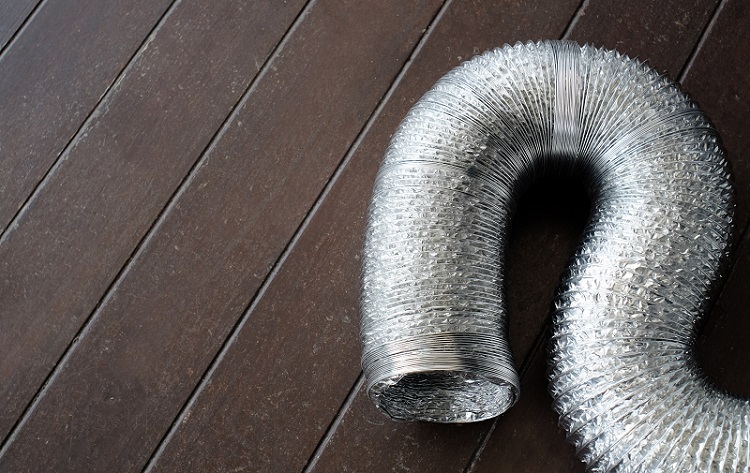Does the thought of renovating your home or establishing a new HVAC system have you grappling with countless unfamiliar terms and concepts? Among these terms, one that consistently pops up is 'flexible ducts'. But what exactly are they and why are they so important in your home improvement project? Well, just as blood vessels are to the human body, flexible ducts serve as the veins and arteries of your home, guiding essential air throughout your space. In this blog, we will unwrap the mysteries of flexible ducts, elucidating not just what they are, but how they're made and the different materials that constitute them.
The world of home improvement can be quite complex, leading many of us to hire professionals. However, having some basic understanding of the components of your home is not just enlightening but can also prove to be financially beneficial in the long run. Today, we are focusing on flexible ducting, an often underestimated yet crucial component of modern homes. By the end of this blog, you'll have gained insights into various types of flexible ducts, their materials, and their corresponding applications in home improvement.
If you've ever been curious about what goes on behind your walls or the mechanics of your ventilation system, this blog post is for you. From the definition of flexible ducts, to their types, and the materials that compose them, we plan to break down these complex details in a way that is visually appealing and easy to comprehend.
The Makeup of Flexible Ducts
To kick off our exploration, let's discuss what exactly flexible ducts are. Just like a highway which facilitates transport, flexible ducts guide cooled and heated air from your HVAC systems to the rooms in your home. The 'flexible' part of the name refers to their ability to bend at will to navigate the many corners and turns within your walls.
When it comes to the anatomy of a flexible duct, it generally comprises three layers. The inner layer, also known as the core, is designed to be airtight while aiding smooth airflow. The middle, or insulation, layer's job is to reduce the loss of heat or cool air. Finally, the outer layer (jacket) is for protection against damage.
Different types of flexible ducts boast different materials in their layers to best suit their purposes. From the polyethylene and metal used in the core to the fibre glass and polyester in the insulation, and the vinyl and polyester in the jackets, the materials used in a flexible duct make a significant impact on the overall performance and lifespan of a duct.
The Pros and Cons of Flexible Ducts
Like everything else in your home, flexible ducts come with their pros and cons. Some pros include: easy installation due to their flexibility; compatibility with both new constructions and remodeled houses since they can be designed to fit any house layout; and lower costs compared to rigid ducts.
On the other hand, some cons encompass: proneness to damage from punctures, tears, and disconnections; lower energy efficiency compared to rigid ducts due to higher potential for leakages; and susceptibility to mold and dust accumulation if not properly maintained.
Diving into the Types of Flexible Ducts
Now that we understand the basics, let's take a deeper dive into the types of flexible ducts. These include: non-metallic, metallic, and thermal. Non-metallic ducts are mainly composed of plastic materials, and hence are lightweight but less durable. Metallic ducts, usually made of aluminum, are more robust and less susceptible to damages. Lastly, thermal ducts are designed for environments that require temperature regulation. Each of these ducts serves various purposes, letting homeowners choose what best suits their properties.
The Right Material Makes a Difference
As mentioned earlier, the type of material used in the construction of a duct also plays a significant role in its performance, and hence, in maintaining the comfort level of our homes. Based on the home's needs and specific location within the walls, different materials are selected for the construction of the duct.
Polyethylene and PVC are leak-resistant making them ideal for the core. Aluminum gives strength and lightweight to the core and jackets. Fibre glass and polyester used for insulation are good for temperature control. Coating the jacket with vinyl and polyester reinforces durability and resistance to external damage.
Care and Maintenance
Lastly, let's touch on care and maintenance. Like all home components, flexible ducts are no different and require periodic inspection and upkeep. Regular maintenance includes checking for leakages, disconnections, and potential mold growth. Patches or replacement ducts should be used when necessary.
Conclusion
The journey of understanding what lies behind our walls and beneath our floors can be fascinating as well as empowering. With flexible ducting playing such a pivotal role in home comfort, gaining even a basic understanding of its types and the materials that compose it, can transform you into a well-informed homeowner. People are opting for flexible ducts because it is cost-effective and easy installation.
Through this post, we've discovered the anatomy of flexible ducts, delved into the materials that make them up, analyzed their types, and even touched on their care and maintenance. Not only does this knowledge enable you to communicate more effectively with your HVAC professionals, but it also equips you with the know-how to recognize when something isn't working right. After all, every small piece forms part of the bigger puzzle that is your dream home. So here's to more home improvement knowledge and a comfortable living experience.

.png)



No comments:
Post a Comment